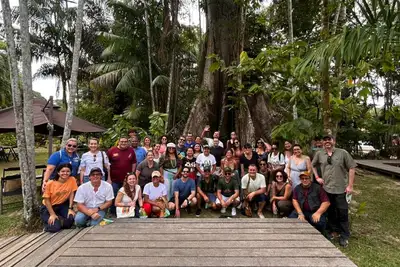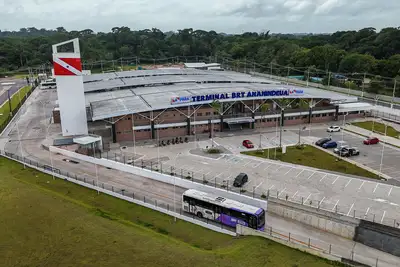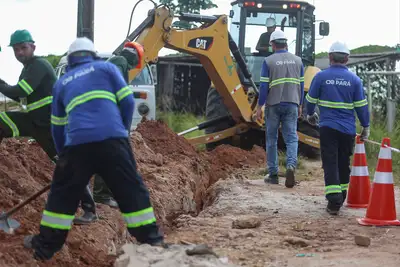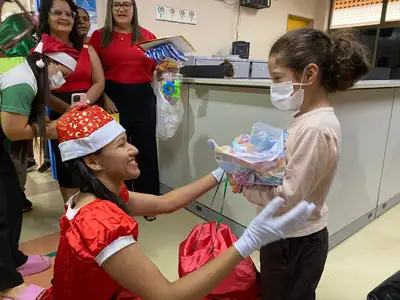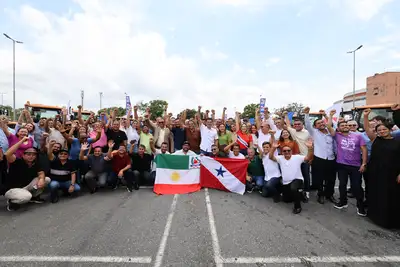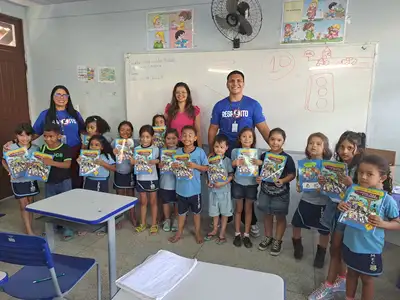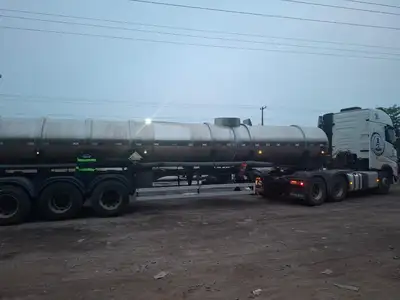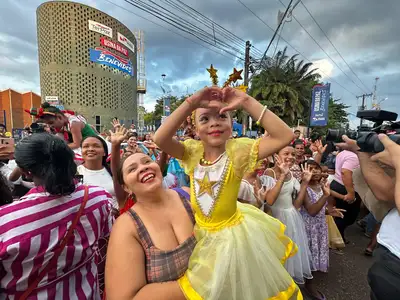Ideflor-Bio shows at COP30 how planning and community leadership strengthen conservation
Community leadership and Management Plans are presented as strategic tools for biodiversity conservation and strengthening environmental policies in Pará
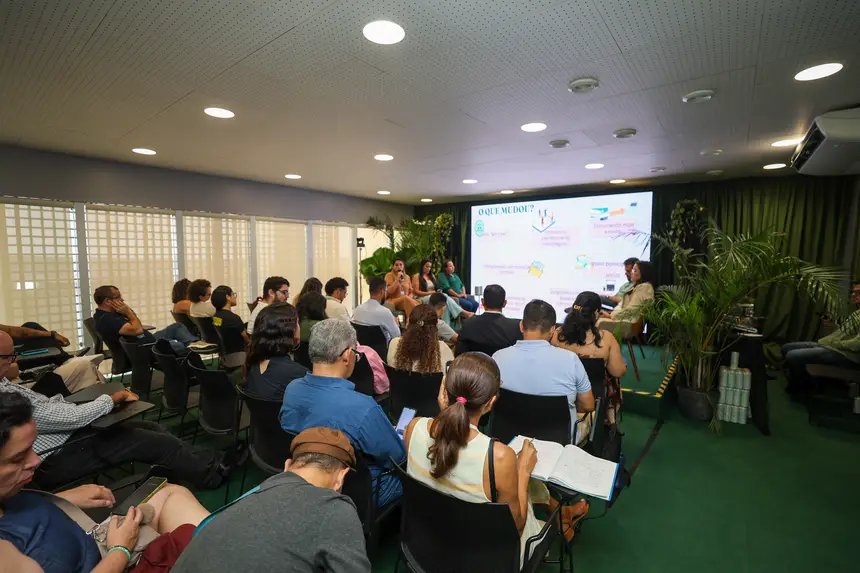
"Conservation and Sustainable Development: The Strategic Role of the Management Plan and Community Leadership in Environmental Management" was the theme of the panel presented this Monday (17), at the Pará Pavilion, in the Green Zone of COP30, which brought together experts from the Forest Development and Biodiversity Institute of Pará (Ideflor-Bio) and a community leader from the Environmental Protection Area (APA) of Combu Island, in the island region of Belém, to discuss how science, planning, and social participation are articulated in the protection of conservation units.
The panel was moderated by Ideflor-Bio environmental analyst, Lorena Viana, and included contributions from the manager of the Administrative Region of Belém, Júlio Meyer; environmental analyst, Shislene de Souza; manager of the Administrative Region of Araguaia, Laís Mercedes; and community member Dona Nena, a reference in the APA of Combu Island.
Opening the debate, the panelists highlighted that the Management Plan is the structuring axis of the management of conservation units, serving as a basis for land use planning, biodiversity protection, and the promotion of sustainable development. The document guides actions in research, tourism, enforcement, and investments, ensuring legal security and defining technical criteria for the appropriate use of natural resources.
For Lorena Viana, understanding this tool as a living and participatory instrument is essential to achieve concrete results. "Conservation and development are not opposing paths," she emphasized. "When the Management Plan is built with technique, science, and community participation, it is possible to empower people, respect the forest, and generate lasting results for the territory," she stressed.
Community involvement - The centrality of community leadership was one of the most defended points throughout the discussion. The panel members reinforced that involving residents from the interior and surrounding areas of conservation units is not just a formal step, but a strategic component. Social participation strengthens governance, values traditional knowledge, reduces conflicts, and expands income and inclusion opportunities. The example of Dona Nena, a resident of Combu Island and a member of the Management Council of the APA, highlighted how community action contributes to transforming practices, strengthening identities, and boosting sustainable production chains.
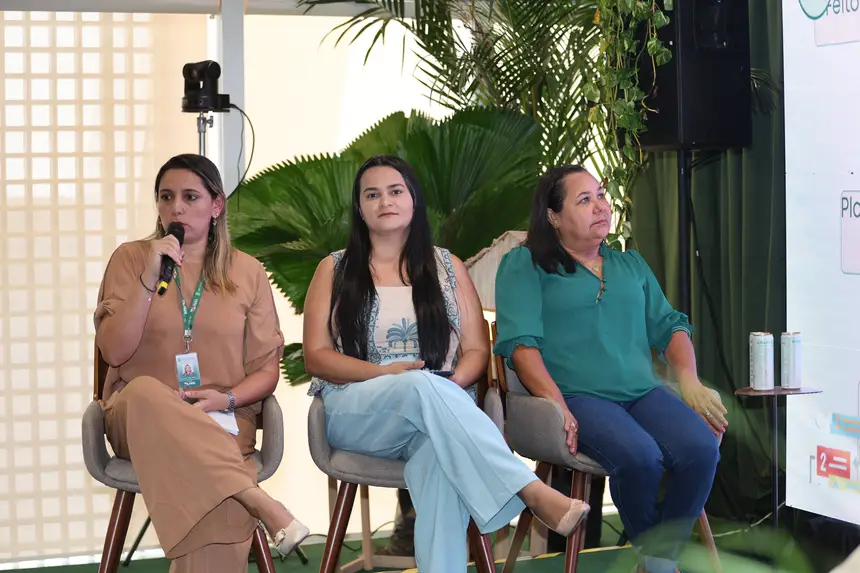
Another important moment was the speech of environmental analyst Shislene de Souza, who detailed the new methodological approach adopted by Ideflor-Bio for the preparation of Management Plans — also called Management Plans in Pará. She explained that the document ceases to be merely technical and becomes a dynamic, strategic instrument directly connected to the daily lives of communities.
According to Shislene, this process increases the assertiveness of decisions, improves zoning, and adapts planning to the specific realities of each unit. "Today, the agency operates with a new way of looking at the territory," she explained. "Dialogue with communities qualifies the information, strengthens the document, and allows for decisions that are more aligned with the real needs of those who live in and protect these spaces," she added.
Climate future of conservation units - Shislene also contextualized the importance of this theme in a global event like COP30, emphasizing that the Management Plans now incorporate elements of the climate agenda. She cited vulnerability diagnostics, future scenarios, climate monitoring, and adaptive strategies built with the direct participation of local populations.
"Communities are our eyes on the territory," she stated. "With them, we achieve more assertive decisions in the face of changes that are already happening, strengthening the socio-ecological resilience of the units and preventing more severe impacts in the future," she emphasized. For the analyst, nothing is done alone: management only becomes effective when based on networks, dialogues, and recognition of territorial diversity.
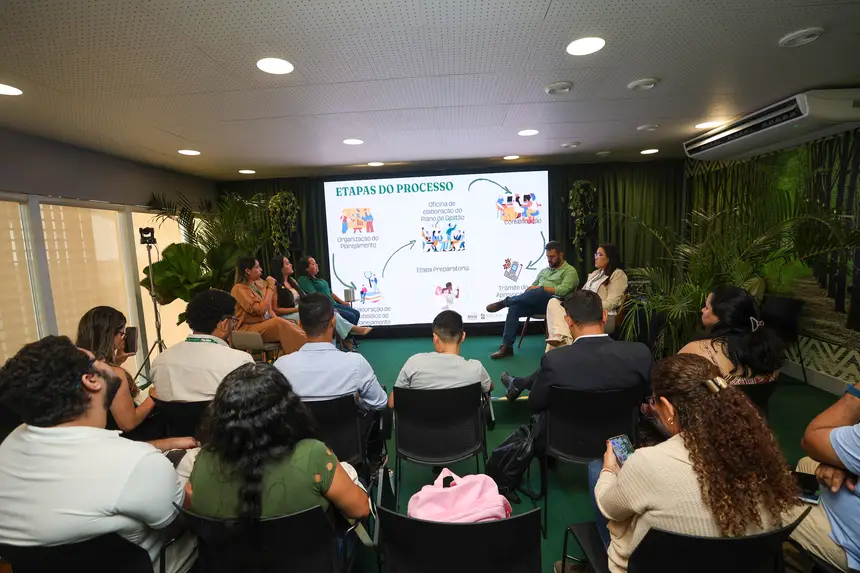
Results in practice - The manager of the Administrative Region of Araguaia, Laís Mercedes, reinforced this perspective by presenting concrete results from the new Integrated Management Plan of the State Park of Serra dos Martírios/Andorinhas and the APA Araguaia, in São Geraldo do Araguaia, southeastern Pará. According to her, the advances were only possible thanks to the intense participation of the communities living in the territory. "The moment was essential for us to show in practice the positive reflections of the work developed based on the new management plan, with an emphasis on the leadership of our community members, who were the fundamental part of this participatory management tool," she stated.
The panel also highlighted the role of conservation units as nature-based solutions to face climate change. The integration between managing agencies, academia, the productive sector, and civil society was defended as essential to strengthen environmental policies and enhance sustainable initiatives. At a time when the world turns its eyes to the Amazon, the debaters emphasized that Pará takes a leadership position by building methodologies that combine science, planning, and social participation.


